Description and characteristics of Chasselas grape varieties, planting and care rules
Due to the nature of cultivation, grapes may not grow in all regions. Mainly, the south is considered a favorable climatic zone for the cultivation of this fruit. But there are varieties that are suitable for growing in other latitudes. For example, the Chasselas grape variety also has frost-resistant varieties.
Chasselas grape variety: description
The shoot of this variety is small and pubescent. Escape burgundy shade. A year after planting the seedling, a reddish stem appears, and the edges become harder. The leaves are large, light emerald in color in all varieties of the variety.
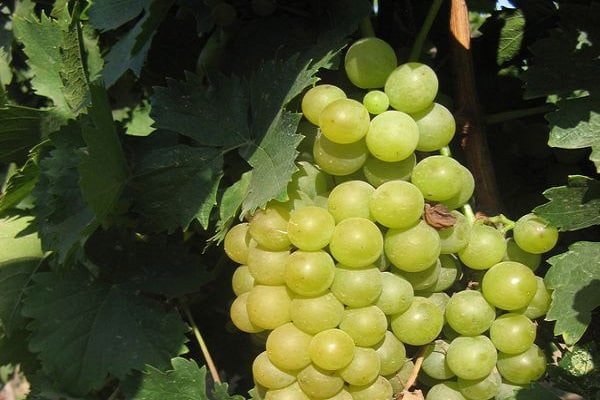
Chasselas grapes are highly productive. In addition, the advantage of the variety is its resistance to fungal diseases. But for the purpose of prevention, the bushes should still be processed.
Also grapes are able to withstand moderate winter frosts. The plant does not tolerate drought well, especially the upper branches, so on dry days the grapes need abundant watering. The variety grows on all types of soil.
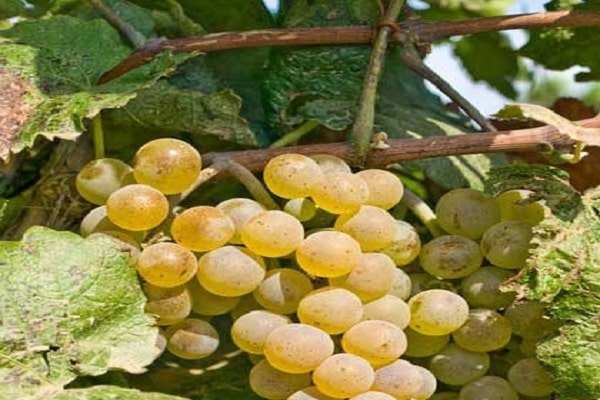
Shasla varieties
There are several varieties of the Chasselas grape variety. All of them differ in appearance and taste of the fruit. The most important difference between the varieties is the shade of the grapes. It ranges from white to burgundy.
White
It used to be thought that this variety was the earliest grape variety until new hybrids were developed. White Chasselas belongs to table hybrids. But in some regions, technical varieties are grown from which wine is made.
Bunches of medium size. The mass is up to 190 g. The shape of the bunch is round, the grapes are green-yellow. One berry weighs about 22 g. The taste is sweet, without a pronounced aroma.
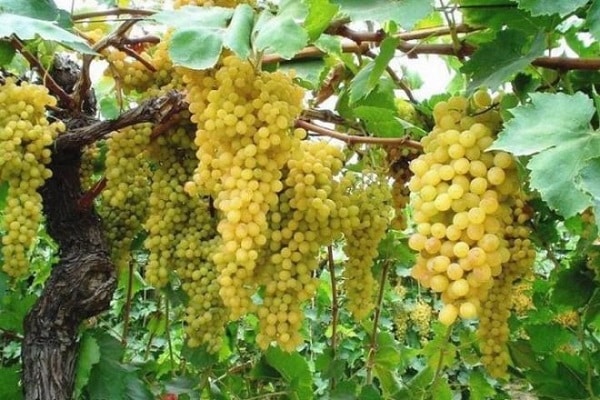
Pink
Chasselas Rosova refers to French table grapes. The hybrid was obtained by crossing Chasselas Royal and Fintendo. Shasla Rosova is characterized by a lower yield compared to white and pink-burgundy grapes. Otherwise, the characteristics of the hybrid are similar to the white variety.
Ramming
Ramminga belongs to table hybrids. The advantage of this hybrid is its frost resistance and resistance to diseases of agricultural crops. Young bushes are characterized by fast growth and average yield. Up to 4 kg of grapes are harvested from one adult bush. The bunches are large. Ripe grapes of light green color. The fruit has a sweet taste with a slight nutmeg flavor.
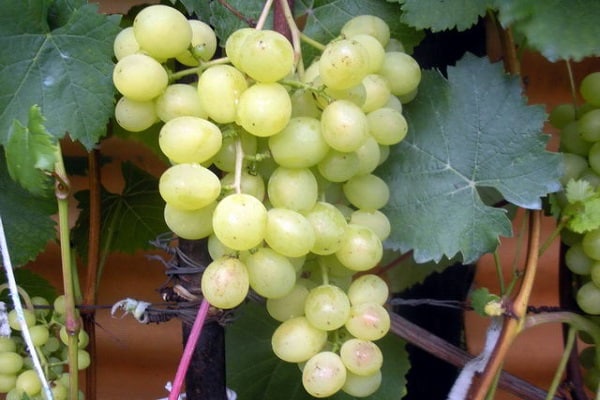
Characteristics of the variety
Before purchasing a vine seedling, you need to study all the characteristics. First of all, attention is paid to the ripening time, disease resistance and yield.
Ripening terms
Chasselas grapes belong to the varieties with early ripening of bunches. Bunches reach biological ripeness 130-140 days after the ovaries appear. Depending on the region of planting, the ripening time of the bunches varies, but not significantly. In the southern regions, ripening begins several weeks earlier than in the central and northern latitudes.

Disease and pest resistance
The resistance to diseases and pests in different types of Chasselas grapes is different, but most hybrids are characterized by weak resistance to mildew and a number of fungal diseases. To prevent the appearance of diseases or pests, the vines are sprayed with chemicals several times per season.
With timely preventive measures, diseases and pests will not have a negative impact on yields.
Description of the berry
The shape of the bunch is oval, slightly elongated towards the base, the berries are tightly adjacent to each other. On average, one brush weighs up to 250 g. Berries are light green in color. The mass of one berry is 20-25 g. The skin is dense. The taste of ripe fruits is sweet in all varieties. Some hybrid varieties do not have a pronounced grape aroma. The pulp is juicy, tasty.
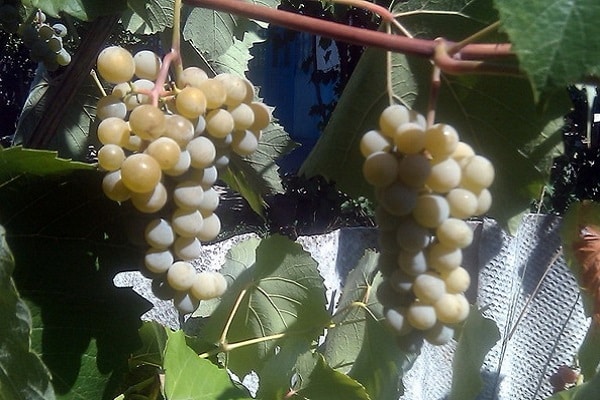
Growing and care
From correctness planting vines further plant productivity depends. It is important to choose the right soil and plant the seedling in open ground. Also an important part is the care of young seedlings and adult plants.
How to prune a vine
The first time the vine is pruned in the spring. All shoots must be removed except for the two central buds. After pruning, these buds are parted to the side. With the onset of autumn, after all the leaves have fallen off, a second pruning is carried out. Delete all branches except the two main ones. 2 buds are left on one branch, 4 on the second.
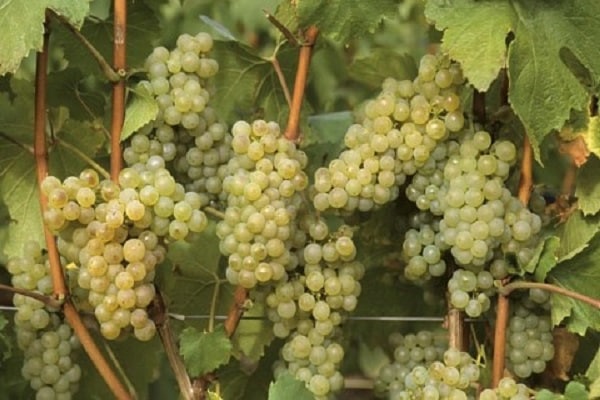
The next year, in the fall, all shoots are cut off from the vine, except for the two central ones. Two branches are left on each central branch. In the third year, they regulate the length of the central branches, preventing them from growing far, and cut off part of the shoots that have grown on the main branches over the summer. In autumn, grapes are cut only after the fall of the leaves. If done earlier, the stems will produce juice.
Irrigation and fertilization
Despite the fact that the grapes are drought-resistant crops, they still need watering. In spring, when shoot growth is just beginning, the plant needs a lot of water. It is recommended to water the vine several times a week.
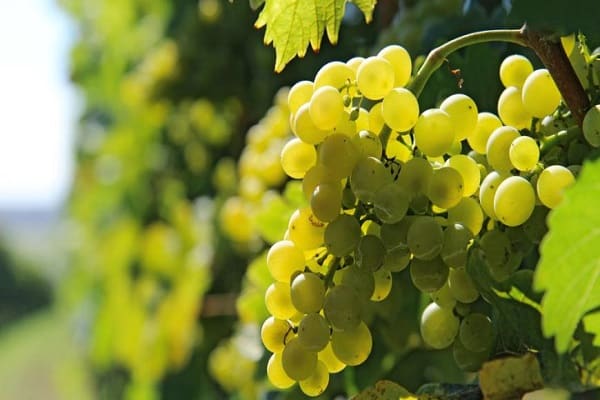
In summer, irrigation is aimed at maintaining soil moisture and preventing it from drying out. Watering can be done once a week. It is undesirable to moisturize the grapes before and after the flowering period. Watering is carried out to shedding the ovaries.
Most of all, the plant needs water during the period of filling the bunches. Water the grapes need several times a week. If it's hot outside, water every other day. The last time the vine is watered is before the onset of frost.
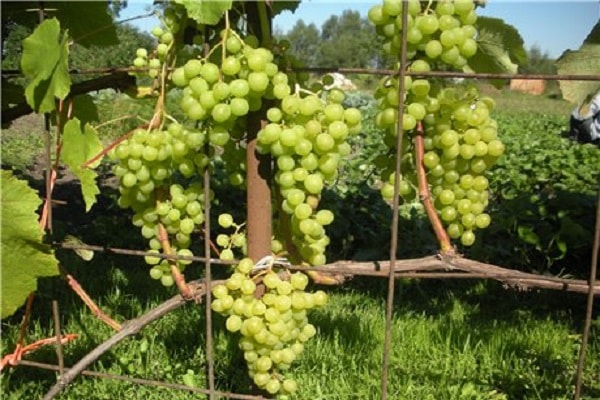
In addition, top dressing is important. In the first half of the season, the vine needs nitrogen, since nitrogen has a positive effect on the growth of inflorescences and ovaries.
The second dressing is applied during flowering. Any fertilizers are suitable during this period. For the third time, fertilizers are applied to the soil during the formation of ovaries. They use phosphorus and potassium, as well as organics. The last time the soil is fertilized is before winter. Manure, compost, ash and other organic fertilizers are used.
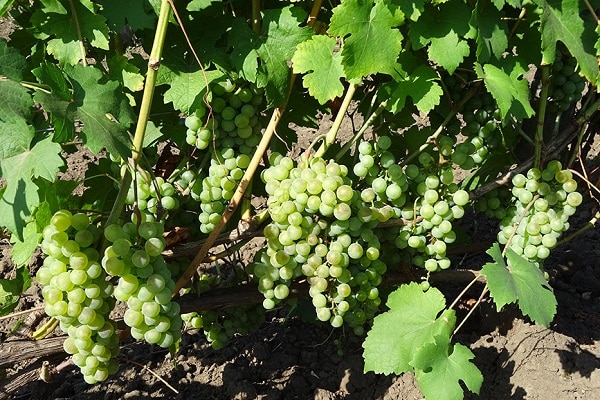
Protection from diseases and pests
The Shasla variety often suffers from fungal diseases, so it is important to regularly examine the bush and carry out preventive procedures on time.
One of the most dangerous grape diseases is phylloxera. Before planting, the shanks are placed in hot water for a few minutes. This will disinfect the planting material.
The treatment of bushes with "Karbofos" during the flowering period helps from the bunchy leafworm. Two weeks after the appearance of butterflies, the bushes are sprayed with "Kinmiks" or "Sumialfa".
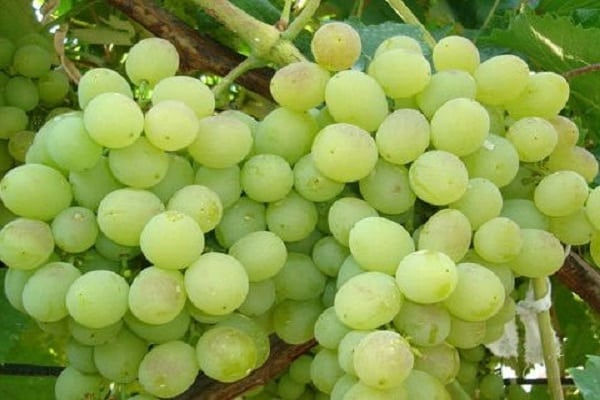
They fight grape itch by spraying the bushes with Neor or Apollo preparations. The grapes are processed during the budding period.
Oidium or powdery mildew is also found on vines. To prevent disease, dry leaves and bunches are removed from the site in autumn. It is also important to thin out the plantings in time and avoid thickening.
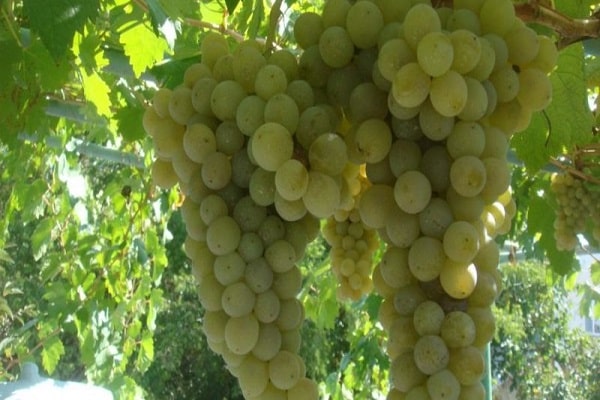
How to harvest and use crops
Ripe bunches are carefully cut with a knife so as not to damage the plant. Grapes are eaten fresh or used to make homemade wines and compotes.
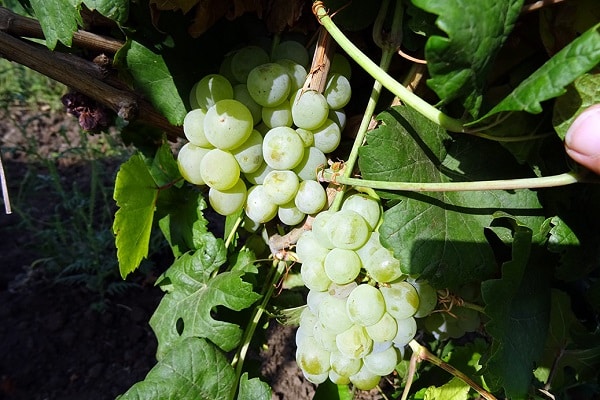
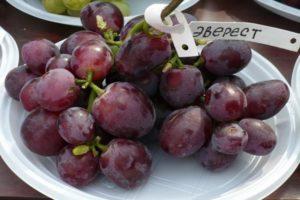





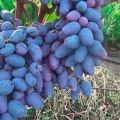
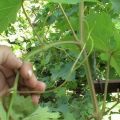

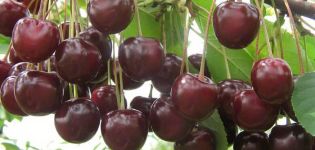
The bunches of these grapes grow quite large, the fruits are juicy with a pronounced aroma and taste. Fertilize the soil before planting "BioGrow". This will improve the yield and strengthen the seedlings.